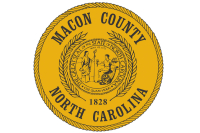Launchpad to space: Camp builds enthusiasm for middle grades
At 10 a.m. Friday, June 25, the parking lot above the Jackson County Early College was nothing but a mundane expanse of asphalt on the upper campus of Southwestern Community College, all but deserted for summer break.
To the moon and back: Astronaut discusses the Space Age’s past and future at WCU
There are a few moments in history that every American alive at the time remembers in crisp detail. The assassination of President John F. Kennedy. The first moon landing. The terrorist attacks of September 11.
All three bore significance during astronaut Charlie Duke’s visit to Western Carolina University last week, on the 18th anniversary of the twin towers’ collapse. Two years before his death in November 1963, Kennedy changed the course of American history when he pledged during a May 1961 speech that the United States would put a man on the moon by the end of the decade. NASA met that challenge with just over four months to spare when Neil Armstrong and Buzz Aldrin became the first people to set foot on the lunar surface, on July 20, 1969.
Apollo missions were propelled by a bold vision
July 20, 1969.
This summer marks the fiftieth anniversary of the Apollo 11 moon landing. Neil Armstrong and Buzz Aldrin stepped to the moon’s surface while Michael Collins flew above them in lunar orbit. About 650 million people worldwide watched the live event on television. Millions of others listened to it on their radios or followed the progress of the astronauts in their newspapers. Those of us who watched will never forget where we were when those grainy images of human beings on the moon’s surface flickered on our television screens.
The very first Christmas (in space)
While perusing the vast litany of uplifting Christmas stories, one might not think to probe the mission archives of the National Aeronautics and Space Administration.





